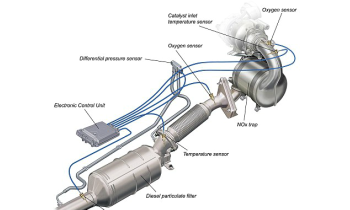As the heavily pressed issue of poor air quality becomes a bigger problem in towns and cities across the UK, the government have made it their top priority to make sure this is solved. By doing so, they’ve started to crack down on all the “dirty diesels”, as it has been highlighted as the main source of producing toxic fumes which are contaminating the air.
 Over the past two months, DVSA (the Driver and Vehicle Standards Agency) has issued a repeat warning to owners of diesels that the MOT test will be more difficult to pass. As in a bid to tackle “dirty diesels”, from 20th May, a more stringent MOT test will make it increasingly harder for badly maintained or illegally modified diesel cars to pass the MOT.
Over the past two months, DVSA (the Driver and Vehicle Standards Agency) has issued a repeat warning to owners of diesels that the MOT test will be more difficult to pass. As in a bid to tackle “dirty diesels”, from 20th May, a more stringent MOT test will make it increasingly harder for badly maintained or illegally modified diesel cars to pass the MOT.According to motoring solutions provider MotorEasy, around 6% of all cars that fail their MOT test do so, because of fuel and emissions faults. However, with the new test commencing in May, this figure is likely to increase.
What does the test involve?
It will include a package of measures aimed at all cars, with diesels being the main focus. It’s mostly diesels sold from September 2009 (59-plate or newer) that are being targeted especially, due to them being fitted with a diesel particulate filter (DPF) to pass strict emissions regulations.
From 20th May, an MOT tester will have to carry out a test to check if the DPF hasn’t been tampered with; if there are signs of it having been cut open and stripped out – the car will automatically fail the MOT. In a similar scenario, if the car was built with a DPF, but it has since been removed, this is another guaranteed MOT fail.
It will include a package of measures aimed at all cars, with diesels being the main focus. It’s mostly diesels sold from September 2009 (59-plate or newer) that are being targeted especially, due to them being fitted with a diesel particulate filter (DPF) to pass strict emissions regulations.
From 20th May, an MOT tester will have to carry out a test to check if the DPF hasn’t been tampered with; if there are signs of it having been cut open and stripped out – the car will automatically fail the MOT. In a similar scenario, if the car was built with a DPF, but it has since been removed, this is another guaranteed MOT fail.
 What is the purpose of a DPF?
What is the purpose of a DPF?A diesel particulate filter is fitted to massively reduce the amount of soot that a car’s exhaust emits.
If it’s working properly, a DPF should ensure there’s no soot or smoke visible with the engine running – that is why the new MOT test will include a check for “visible smoke of any colour”. If there is any sign of smoke being emitted, the car will fail the MOT.
Why are people removing the DPF?
DPF’s can clog up and aren’t the cheapest to replace, therefore, some owners have had them removed. This is a practice that’s been illegal for several years already.
The DVSA said “legitimate” work carried out on a DPF will have to have a record of proof, like a receipt from the garage that carried out the maintenance of the filter each time the vehicle undergoes an MOT.
How can you maintain a DPF?
There are two main methods of maintaining a DPF – passive and active.
To conclude, we advise all diesel-car drivers to familiarise themselves with the new items that will be included in the test, so that they can avoid their vehicle failing its MOT.
For more CarCliq news click here
How can you maintain a DPF?
There are two main methods of maintaining a DPF – passive and active.
- Passive regeneration occurs when the car is running at motorway speeds for half an hour or longer to push the exhaust temperature higher, so it can start the process of burning off the excess clogged spot.
- Active regeneration means extra fuel is injected automatically, as part of the vehicle’s ECU, when a filter reaches a predetermined limit (normally about 45%) to raise the temperature of the exhaust and burn off the stored soot.
To conclude, we advise all diesel-car drivers to familiarise themselves with the new items that will be included in the test, so that they can avoid their vehicle failing its MOT.
For more CarCliq news click here